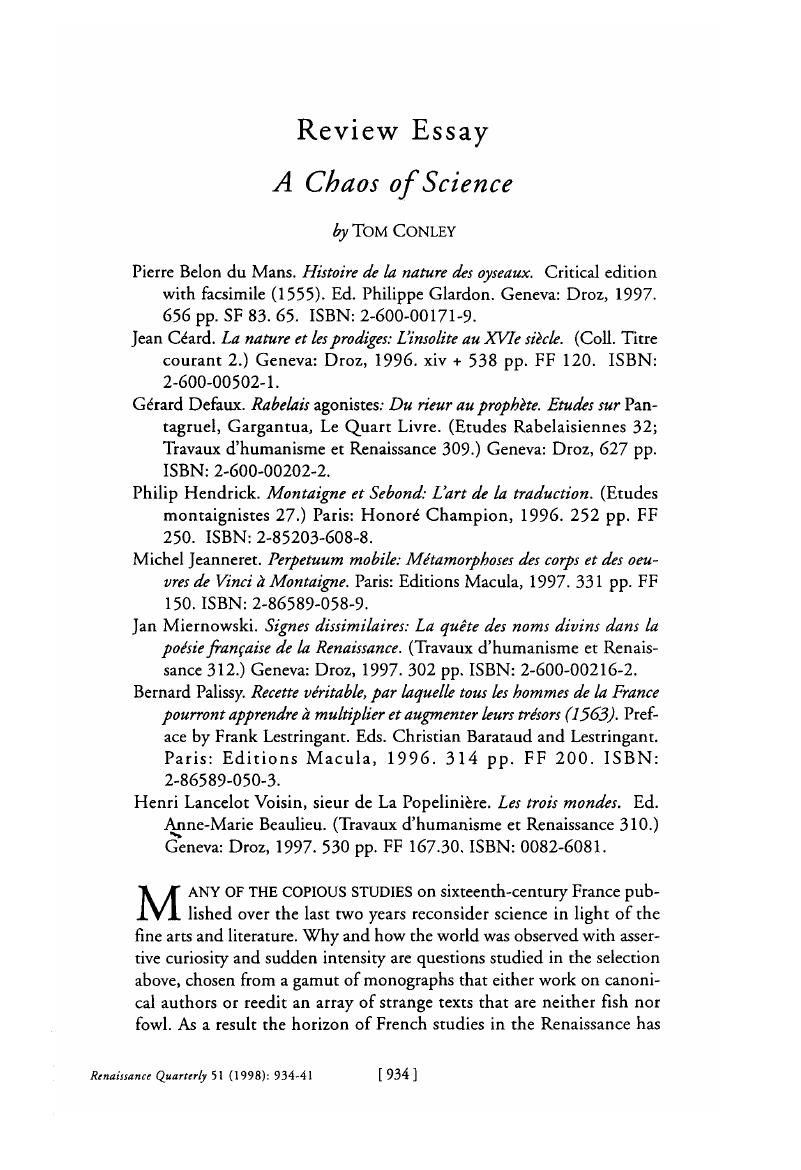Article contents
A Chaos of Science
Published online by Cambridge University Press: 20 November 2018
Abstract

- Type
- Review Essays
- Information
- Copyright
- Copyright © Renaissance Society of America 1998
References
1 Numa Broc, La geographic de la Renaissance (1480-1620) (Paris: Biblioth£que Nationale, 1980): 211.
2 “It is rather like an eidetic experience, accompanied by an intense feeling and a sense of wonder or discovery. It may not be clear to the person what he [or she] has discovered but the picturing inside the mind of some person or event has the integrity of memory rather than the fracture of hallucination,” notes Bollas about the condition in The Shadow of the Object: Psychoanalysis of the Unthought Known (New York: Columbia University Press, 1987): 271.
3 Frank Lestringant, “L'insulaire de Rabelais ou la fiction en archipel,” reprinted in £crire le monde a la Renaissance. Quinze itudes sur Rabelais, Postel Bodin et la litte'rature giographique (Caen: Editions Paradigme, 1993): 159-84; Michel Jeanneret, Le difi. des signes. Rabelais et la arise de Vinterpritation a la Renaissance (Orleans: Editions Paradigme, 1996).
4 Samuel Kinser analyzes the episode with care and brio in his Rabelais's Carnaval (Berkeley: University of California Press, 1990).
5 Rabelais, Le Quart livre, in Mireille Huchon, ed., Oeuvres completes (Paris: Gallimard/ Pleiade, 1994): 618 (my emphasis).
6 Walter D. Mignolo, The Darker Side of the Renaissance: Literacy, Territoriality, & Colonization (Ann Arbor: University of Michigan Press, 1995).
- 1
- Cited by


